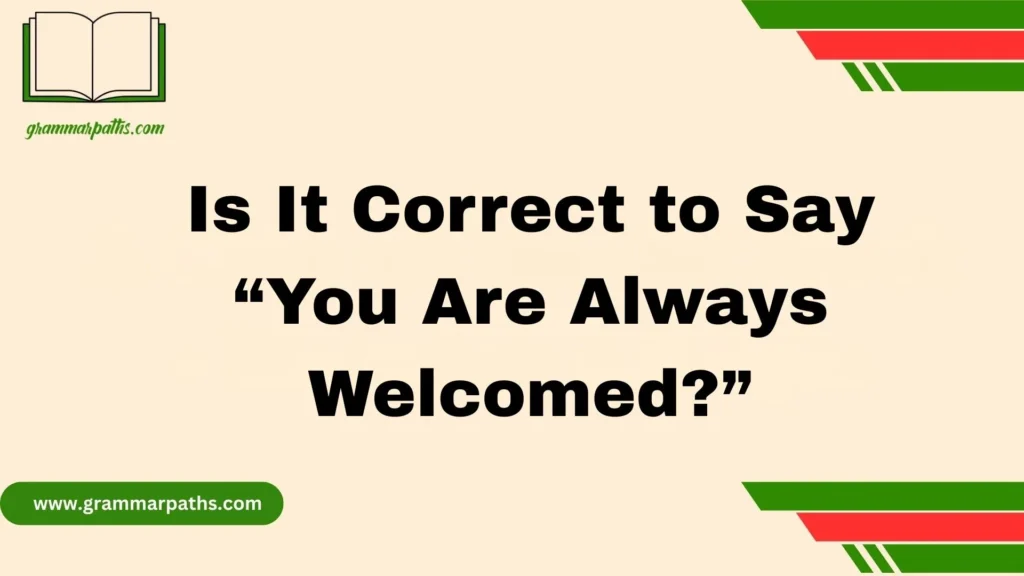In English grammar, knowing when to use “There Has Been or There Have Been” might seem like a small detail, but this difference is actually crucial for keeping your writing clear and grammatically correct. As someone who’s reviewed countless emails, blog posts, and business reports, I’ve seen firsthand how these two phrases can shape the overall effectiveness of communication.
The key is understanding the form: use “there has been” for singular references and “there have been” for plural references. Many people overlook this because it feels subtle, but it follows strict grammar rules that improve writing precision. Early in my career, I studied a comprehensive guide filled with real-world examples, and that made a lasting impression. Once I mastered these differences, my writing became much clearer and more professional.
Even now, when working on research papers or training others, I still refer to usage trends and updated grammar resources to keep up with how modern English evolves. Consistently applying the right form not only enhances clarity but also helps elevate your message and credibility.
One of my favorite comparisons is: “there have been several updates” versus “there has been one change.” Both are correct, but they communicate very different ideas. Once you learn to use these phrases effectively, your writing will have more authority and natural flow. It’s not just about following rules — it’s about communicating with precision and confidence.
Grasping the Basics: Singular vs. Plural
The core rule is simple:
- Use “has been” for singular things.
- Use “have been” for plural things.
These phrases follow this structure:
There + has/have + been + [subject or event]
The tricky part? The subject comes after the verb. So the verb must agree with what comes later, not with “there.”
Example:
- There has been a problem.
(“Problem” is singular → use has) - There have been many problems.
(“Problems” is plural → use have)
When to Use “There Has Been”
Use “there has been” when talking about one thing, or a non-count noun (like “progress” or “traffic”).
Examples:
- There has been a misunderstanding.
- There has been heavy rain all day.
- There has been a rise in gas prices.
These subjects are all singular or non-count, which means “has” is the correct verb.
Quick Table: When to Use “There Has Been”
| Example Sentence | Subject Type | Explanation |
| There has been a delay. | Singular noun | One delay happened |
| There has been progress on the project. | Non-count noun | “Progress” is not countable |
| There has been an incident near the school. | Singular event | One incident occurred |
| There has been strong support from fans. | Collective singular | “Support” is seen as one unit |
When to Use “There Have Been”
Use “there have been” when talking about more than one thing — anything plural.
Examples:
- There have been many complaints today.
- There have been several updates.
- There have been reports of flooding.
Each sentence refers to multiple items or events, so we use “have.”
Quick Table: When to Use “There Have Been”
| Example Sentence | Subject Type | Explanation |
| There have been delays in the system. | Plural noun | Multiple delays |
| There have been calls for resignations. | Plural noun | Many people calling for change |
| There have been warnings issued. | Repeated events | More than one warning |
| There have been incidents across the city. | Multiple occurrences | Several incidents |
Real-World Examples
From News Headlines:
- “There has been a rise in inflation this quarter.” — BBC News
- “There have been reports of hacking attempts.” — CNN
- “There has been progress in peace talks.” — New York Times
- “There have been several arrests after the protest.” — Reuters
A Quick Grammar Refresher
Let’s unpack what’s going on grammatically behind the scenes.
The Role of “There”
The word “there” is what’s called a dummy subject. It doesn’t point to anything specific — it just introduces the idea that something exists.
Compare:
- A fire has been reported.
- There has been a fire reported.
They mean the same thing, but the second version shifts the focus to existence — that the fire happened.
Perfect Tense
Both “has been” and “have been” are in the present perfect tense. This tense is used for:
- Actions that started in the past and are still relevant
- Events that happened recently
- Situations that are ongoing
Easy Tip: The “Is/Are” Trick
Here’s a simple trick to check which one to use:
- If you’d say “There is” → use “There has been”
- If you’d say “There are” → use “There have been”
Try it with this:
- There ___ been several errors.
→ You’d say “There are several errors” → So: There have been several errors.
Common Confusions (Solved)
When the Subject Comes Later
Sometimes the sentence starts with “There has/have been,” and you don’t immediately see the subject.
Example:
- There have been in recent years numerous changes in the law.
The subject is “numerous changes,” which is plural — so “have been” is correct.
Collective Nouns
Words like team, family, or group can be tricky.
- If the group acts as one unit, use “has been.”
- There has been support from the team.
- There has been support from the team.
- If members of the group act individually, you can use “have been.”
- There have been disagreements among the team members.
- There have been disagreements among the team members.
Indefinite Quantifiers
Words like some, many, all, or none depend on what they refer to.
- There have been some problems. → “Problems” = plural
- There has been some confusion. → “Confusion” = non-count
Case Study: Formal Report Writing
Scenario:
A tech company is preparing a quarterly performance report.
Incorrect:
“There has been many server issues.”
Correct:
“There have been many server issues.”
Why?
“Server issues” is plural, so “have been” is required.
Asking Questions with “There Has Been” or “There Have Been”
Just flip the verb and “there” to form a question.
Examples:
- Has there been a change in policy?
- Have there been any updates since the last meeting?
Expressing Negation
To make these negative, just add “not” after the helping verb.
Examples:
- There has not been a response yet.
- There have not been any errors today.
You can also use contractions:
- There hasn’t been a response.
- There haven’t been any issues.
Affirmative Statements in Context
Here are some examples of how each form is used in real life:
| Scenario | Correct Sentence |
| One problem in a report | There has been a mistake in the figures. |
| Several problems in a project | There have been issues with the timeline. |
| One update sent to the team | There has been an update on the server status. |
| Multiple updates throughout the day | There have been several updates from IT. |
Historical Usage Trends
If you check Google Ngram Viewer (a tool that tracks word usage in books), you’ll see that both “there has been” and “there have been” have been in common use for centuries.
However:
- “There has been” is more common in academic writing and formal speech.
- “There have been” appears more in news reports, blogs, and conversations involving multiple subjects.
Special Cases: What If the Subject Comes Later?
Sometimes, you won’t see the subject immediately. Read carefully and find it after the verb.
Example:
- There have been, in recent years, several attempts to resolve the conflict.
The subject is “several attempts” — which is plural.
Quick Reference Table
Here’s everything summarized in one place:
| Use Case | Phrase to Use | Example |
| One event or non-count subject | There has been | There has been confusion about the deadline. |
| Multiple countable items | There have been | There have been three delays this week. |
| Asking a question (singular) | Has there been… | Has there been any news? |
| Asking a question (plural) | Have there been… | Have there been any updates? |
| Negative (singular) | Hasn’t been | There hasn’t been any feedback. |
| Negative (plural) | Haven’t been | There haven’t been any problems. |
Frequently Asked Questions About “There Has Been or There Have Been”
Q: When should I use “there has been”?
Use “there has been” when referring to a singular event, object, or situation. For example, “There has been a delay in the shipment.”
Q: Can I use “there have been” for a single item?
No. “There have been” is used only with plural subjects. For example, “There have been several complaints.” Using it with singular subjects sounds incorrect.
Q: What if the subject comes after the phrase?
It’s still about singular or plural agreement. For example, “There has been a rise in prices” (singular) versus “There have been many rises in prices” (plural).
Q: Are there exceptions with collective nouns?
Collective nouns can be tricky. Generally, if the noun acts as a single unit, use “there has been.” If you emphasize individual members, use “there have been.”
Q: How do indefinite quantifiers affect the choice?
when using quantifiers like “some,” “many,” or “several,” use “there have been.” For example, “There have been many changes.”
Q: Can I use these phrases in questions? Yes! For example:
- “Has there been any progress?” (singular)
- “Have there been any updates?” (plural)
Conclusion: Mastering “There Has Been or There Have Been” for Clear, Confident Writing
Understanding the difference between “there has been” and “there have been” is more than just a grammar rule — it’s a tool that sharpens your writing and strengthens your message. By remembering to match singular subjects with “there has been” and plural subjects with “there have been,” you’ll avoid common mistakes and write with greater clarity and authority.
Whether you’re drafting a professional email, crafting blog content, or working on academic papers, applying this rule consistently will make your writing sound more natural and confident. Plus, it helps your readers understand exactly what you mean without confusion.

Emma Brooke is a passionate language expert and contributor at GrammarPaths.com, where she helps learners navigate the complexities of English grammar, idioms, and effective writing. With a strong academic background and years of teaching experience, Emma excels at turning tricky grammar rules into simple, practical lessons that readers can easily grasp.












